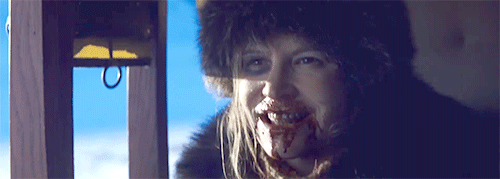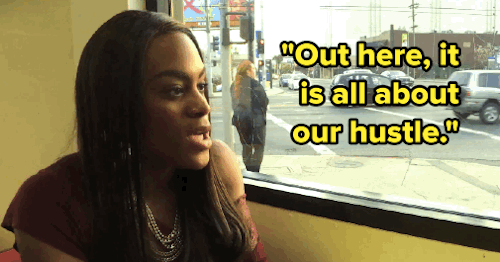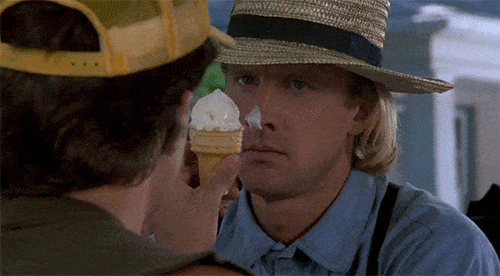Quick Words on They Came Together (2014) and The Martian (2015)
When it comes to romantic comedies, I can only name about a hand’s full of films that I actually enjoy most of which aren’t even considered by many when discussing the genre (It Happened One Night, Before Sunrise, Eternal Sunshine of the Spotless Mind, Before Sunrise, Sunset, and Midnight, Annie Hall). Therefore, it’s probably predictable that I’d love a film that nitpicks and pokes at the genre as a whole. When you mix that element with the absurdity of comedian and director David Wain’s humor you get priceless moments within the film where character’s get diarrhea in their outfits, or fall out of windows unexpectedly, and repeat lines that get beaten over the head into ad nauseam. Thus is They Came Together, an insane hodgepodge of romance, comedy, stupidity, and wit.
Science Fiction films align more with my personal tastes. Yet, even when the The Martian released last year I found myself apathetic about seeing it. The hype and Oscar nominations ensued and I finally made the time to watch it. Disappointment is the first word that rings to mind, but disappointment would mean that I expected something different. The Martian didn’t exceed my expectations, nor did it elude them. It just existed in the vain of mediocrity that I expected it to, which I guess is most disappointing of all. Ridley Scott’s visuals are nothing short of amazing. This is the man that brought the world Alien, Blade Runner, and Black Hawk Down, staples within the sci-fi and action genres. Nevertheless, Scott also gave us the highly whitewashed Exodus: Gods and Kings and the underwhelmingly scatterbrained Prometheus which unfortunately has a sequel on the way. The Martian felt like a contemporary Ridley Scott film, all bells and whistles when it comes to visuals, but hollow depth of characters and development. The story is impressive thanks to the adapted screenplay based on Andy Weir’s original novel. But, Drew Godard’s screenplay gives more reprise and focus to the science used within the film rather than the character’s inner turmoil and dilemma’s.
Don’t get me wrong, it’s definitely badass seeing Matt Damon get left behind on Mars having to show how he’s half-computer half-botanist who figures out a way to survive and grow food on Mars, but to return to his home planet on a mission that will take years. He’s got some of the greatest minds in the world helping him perfect his theories and ideas and I thoroughly enjoyed seeing that play out. But, the script is as bland as his four year diet on Mars. It’s cheap and the dialogue is poorly written. Matt Damon’s character is simply a character. He seemingly has no life outside of the space program, no music that he wishes he had to listen to, no hobbies, no friends who aren’t on NASA, or anything remotely relatable which just left me to watch this random dude struggle on Mars.
With all that said I decided to do my very first video review centering around both of these films. What transpired while filming myself was loads of confusion, accidentally deleted takes, loss of memory from my iPod, and ultimately the sad reminder that I am a much better writer than I am a speaker. One day I’ll get it together, but feel free to watch my poorly constructed video below and know that in the future they will be a lot better.
They Came Together. SEE IT.
The Martian. AVOID IT.
Celebrating Dr. Martin Luther King Jr. the Cinephiliac Way
Today marks the celebration of a great leader brought into this realm of existence to continue the fight started by those before him. Dr. Martin Luther King Jr. helped unite this country by reminding us that our feeble, silly little arguments over our insignificant differences have no place in future generations. Inspired by Mahatma Gandhi, Dr. King’s message resonated across the entire planet influencing countless movements and policies while also changing the way many people looked at one another and themselves. By fighting for love and peace in a time where the silent majority allowed hate and fear to dominate, Dr. King, along with his fiercely brave supporters, shifted the paradigm that polluted the air of the era. In his honor, if only for two minutes, it’s important to reflect on his legacy and contemplate what you can and will do to continue his fight. Here are a few films and episodes of television shows to watch that may help usher in the essence and inspiration of Dr. Martin Luther King Jr.
1. Selma (2014)
 Director Ava DuVernay and screenwriter Paul Webb unravels the powerful saga of Dr. King’s strenuously orchestrated march from Selma to Montgomery, Alabama despite a slew of obstacles that stood in his way. Selma is an emotional roller coaster that focuses on the men and women including King’s trusted aids whom laid down their bodies and lives for the chance of a brighter future.
Director Ava DuVernay and screenwriter Paul Webb unravels the powerful saga of Dr. King’s strenuously orchestrated march from Selma to Montgomery, Alabama despite a slew of obstacles that stood in his way. Selma is an emotional roller coaster that focuses on the men and women including King’s trusted aids whom laid down their bodies and lives for the chance of a brighter future.
2. “King” (1978)
The “King” mini-series takes some liberties with Dr. King’s personal and professional life, but that doesn’t stop the series from being a prevailing force of nature that teaches and uplifts. The epic four and half hour series spans King’s awakening in the Civil Rights Movement, his place in it, and his death. Paul Winfield and Cecily Tyson deliver heartfelt, phenomenal performances as Dr. King and Coretta Scott King that still hold up today.
3. Selma, Lord, Selma (1999)
Selma, Lord, Selma retells the Selma March through the eyes of the then 9-year-old Sheyann Webb known as the “smallest Freedom Fighter. Sheyann walked with Dr. King during the first of three attempted marches to Montgomery. The march has become infamously known as Bloody Sunday due to the brutal attacks reigned down on the protesters from law officials. Selma, Lord, Selma was a staple to watch around MLK Day in my younger days, one that will always tug at my heart-strings.
4. “The Boondocks” (Return of the King – 2006)
Sometimes you need a break from all the tragic madness when celebrating Dr. King. The Boondocks’ episode where Dr. King awakes from a coma to discover what became of his people is both thought-provoking and hilarious.
5. The Butler (2013)
 Lee Daniels found inspiration in Robert Zemeckis’ Forest Gump by allowing the narrative of The Butler to span a couple of decades allowing audiences into the life of Cecil Gains, an African-American butler in the White House. As time passes, Cecil stays employed during multiple presidencies but must endure the growing changes of the Civil Rights Movement happening around him, a movement that his son has placed himself directly into the middle. Though Martin Luther King isn’t directly in this film, his influence is all over it.
Lee Daniels found inspiration in Robert Zemeckis’ Forest Gump by allowing the narrative of The Butler to span a couple of decades allowing audiences into the life of Cecil Gains, an African-American butler in the White House. As time passes, Cecil stays employed during multiple presidencies but must endure the growing changes of the Civil Rights Movement happening around him, a movement that his son has placed himself directly into the middle. Though Martin Luther King isn’t directly in this film, his influence is all over it.
6. What Happened Miss Simone? (2015)
This harrowing documentary focuses on the ups and downs of famed singer Nina Simone. Though Nina made a name for herself as a sultry singer with classically beautiful piano skills, her career and the strength of her voice came alive through the Civil Rights Movements and the effect that Dr. King’s death personally had on her.
SEE THEM ALL. Available on Netflix, YouTube, and DVD.
Have Four Beers with The Forest (2016)
Take a few shots and down four beers if you plan on watching Jason Zada’s The Forest. Though it provides some intriguing horror aspects and a few chills, it’s riddled with predictable moments and a terrible lead character. Drink what I can’t in my month of sobriety… please.
Exploring Blood Lust and the Frigid Frontier with The Hateful Eight (2015) and The Revenant (2015)
 Love breeds a powerful force that can change the world, unfortunately so can hate. At opposite ends of the spectrum both emotions create an energy and potential within those who choose to focus on one or other allowing great achievements to get accomplished with either power source in their corner. As Radio Raheem once taught us, love and hate are always battling each other and sometimes it looks like hate wins. Take the Kellogg brothers for instance, their bitter rivalry changed the nature of breakfast into what we know it as now. This year two films focus on the power of hate and the lengths that people go when fueled by it. Despite being two completely different tales depicted by two different directors, The Hateful Eight and The Revenant have an awful lot in common.
Love breeds a powerful force that can change the world, unfortunately so can hate. At opposite ends of the spectrum both emotions create an energy and potential within those who choose to focus on one or other allowing great achievements to get accomplished with either power source in their corner. As Radio Raheem once taught us, love and hate are always battling each other and sometimes it looks like hate wins. Take the Kellogg brothers for instance, their bitter rivalry changed the nature of breakfast into what we know it as now. This year two films focus on the power of hate and the lengths that people go when fueled by it. Despite being two completely different tales depicted by two different directors, The Hateful Eight and The Revenant have an awful lot in common.
When you hear Quentin Tarantino or Alejandro González Iñárritu’s name attached to any project, you can’t help but have your heart skip a beat in excitement and let out a squeal of pure delight… well at lease that’s my reaction to both men. My loving devotion to each director has been long, steady, tried, and true. Hearing their names involved in a project is like hearing the word “fried” used for a meal description, or “Beatles” attached to a song—you know it’s going to be good, even if it isn’t great. Mutually, Tarantino and Iñárritu are exceptional visual storytellers who use cinema as a means to advance the medium in unprecedented ways.
Iñárritu is known for his gripping emotional tales and fantastic visual cues that extend shots into seamless long takes with impeccable movement. Tarantino, on the other hand, focuses on language making films with heady dialogue infused into body genres that focus on the excess of blood, guts, and tears while somehow still prompting laughter. Both of these men prove they possess the ability to impress and shock viewers in their newest projects by bringing their well-known tropes to new and improved heights.
In The Hateful Eight Tarantino uses the motif of classical westerns to tell a new tale of dirty rotten scoundrels in the post-Civil War era northwest. There, a group of men and one woman find themselves stuck together in a cabin as blizzard bares down around them. Each person possesses their own journey and secret intentions, but as their paths cross they must confront each other’s backgrounds and beliefs while dealing with how these harbored opinions will affect them personally. This leads to one hell of an adventure for Marquis Warren, an African-American former Union Colonial.
After his horse succumbs to the frigid cold of the land, Marquis must rely on the kindness of a gruff bounty hunter, John Ruth (Kurt Russell), who’s apathetic to anyone except the $10,000 reward chained next to him, fugitive Daisy Domergue (Jennifer Jason Leigh). Along the way to their collective detestation, Red Rock, the group run into another stranded civilian with the same destination, Confederate militiaman Chris Mannix. The four travel through blistering cold and dangerous political conversation in a stagecoach together until they arrive at a well-known lodge called Minnie’s Haberdashery. There the story’s momentum continues to build with the inclusion of four other men all with their own tales and journeys ultimately leading to a guaranteed blood bath that takes place in the most gruesome, humorous ways possible.
On the opposite end of the spectrum is Iñárritu’s brutal tale of one man’s fight for survival in the unsettled freezing wilderness of the Louisiana Purchase territory. A fur trapper by trade, Hugh Glass (Leonardo DiCaprio) is a wilderness expert helping a team of trappers collect pelt on a month’s long journey to sell. During a routine expedition their team is attacked by a clan of Native Americans who kill half of the team forcing the rest to flee and abandon their pelt and boat. The group’s only option is to trek to their destination by foot up mountains and through Native territory. But, things take a turn for the worse when Hugh is mauled by a bear requiring his men to carry him the rest of the way to the disdain of his fellow trapper John Fitzgerald (Tom Hardy) whom thinks of Hugh as a traitor for having a half Native son on the trail with him. After Fitzgerald makes the decision to leave Hugh for dead, Hugh musters up the energy and courage to find Fitzgerald and seek his revenge.
The Hateful Eight and The Revenant not only share locations of unsettled Western territory and themes of blood lust revenge, but both film’s respective directors spares no shot or sequence despite the long run time of each. Tarantino famously shot The Hateful Eight in 70mm, a high-resolution technique that if given the chance must be seen in this format. The larger picture quality stretches the film’s landscape maximizing the beauty on screen and giving the picture a grandiose quality. Snow becomes synonymous with the struggle endured by the group to make it to their destination and the quality of the picture gives the natural phenomenon a wondrous and sinister quality.
Iñárritu also uses snow to his advantage showcasing the unbelievable struggles endured by Hugh Glass. As snow falls with faint, solemn beauty, Hugh finds himself in repeated horrendous situations. Snow acts as an angelic omen of horrors to come covering Hugh in solitude and pain. Iñárritu also shows his mastery behind the camera using the film’s climatic opening sequence as a means of exemplifying what a camera is capable of capturing. Iñárritu gets eye level with the action tracking right behind characters and within moments of intensity. We get so close that blood splatters on to the camera and the hotness of Hugh’s breath fogs up the lens leading to a delightful transition into clouds in one particular sequence.
The Revenant is capable of taking your breath away simply because it forces you into the situations that Hugh faces. It’s an absolutely incredible experience to sit through and the same can be said of The Hateful Eight. Are both films perfect? Of course not. Tarantino’s film may lack the punch that some viewers expect and it is reminiscent of Reservoir Dogs with its plot that centers around a group trapped in a room attempting to figure out whom among them is the worst. Tarantino has been thought to have ‘lost it’ or peaked in the past as The Hateful Eight has been considered too much of a fan boy project on a similar vein as Death Proof. Some critics and fans will view The Hateful Eight as being too much of a homage as opposed to harboring unique qualities and novelty factors.
Likewise, The Revenant’s story, which follows the unbelievable near death experiences of Hugh Glass, may be viewed as overkill. The two and a half hour epic repeatedly jumps back and forth between Hugh’s struggles, the adventures of the men who left him, dream sequences experienced by the half-living Hugh, and a side story following a group of Arikara Native Americans looking for their chief’s kidnapped daughter. Depending on your attention span this may cause the film to lose its steam.
For me, these are all minute issues in a larger pool of brilliance. Tarantino is far from having “lost it”, instead he seems more settled into his dialogue heavy screenplays centering The Hateful Eight on the topic of racism and race relations in early America, a topic that holds hardened relevancy today. As always, Tarantino produces some fantastic performances from his actors involved. Samuel L. Jackson is at the best of his career, while Kurt Russell and Jennifer Jason Leigh churn out fantastic performances. Tarantino’s idolizations of westerns and epics of Classic Hollywood gives way to stunning long shots and an atmosphere of deceit making The Hateful Eight a gripping tale of classic proportions.
Meanwhile, the back and forth during The Revenant feels more like a fluid dance while Iñárritu’s magnificent long shots of nature possesses a poetic quality calling to mind the imagery of Terrence Malik. Hugh’s repeated near death experiences causes so much anxiety that it results in the most satisfying ending of a film I’ve seen in years. It’s to be without saying that Leonardo DiCaprio’s performance blows his previous roles out of the water, but even just as impressive is Tom Hardy’s performance as Fitzgerald. Hardy is captivating embodying a rationalized evil that compliments well with DiCaprio’s physical performance filled with tears, blood, spit, and reeling in the ground.
While each film has their weaknesses both are incredible cinematic achievements. During this current era where television has peaked in artistic value and storytelling quality, cinema has fallen by the wayside in recent times. Fewer films have taken cinema to new heights in the past few years while television has surpassed it by going above and beyond what is necessary for the small screen. The Hateful Eight and The Revenant are two films that prove cinema still has staying power. Both films possess the strength of shocking and engaging in powerful ways. If you’re looking for a film or two that will blow you away, then look no further. Tarantino and Iñárritu has got you covered.
SEE THEM BOTH. As soon as possible and enjoy!
Tangerine (2015); Alternative Representation at its Best
There’s the occasional film that breaks out from the bonds of conventional cinema to breathe new life into a story and the people and places within it. Tangerine is a prime example of that type of film embodying a boldness unlike anything you’ve likely seen before. This deep dive into brash waters has allowed Tangerine to claim its spot as one of the most unique feature-length films of our time. It’s a film that showcases the bonds of friendship and the shallowness of people all while bestowing a stunning, grimy view into a piece of American life that most people know nothing about or try adamantly to ignore. For this reason alone, I absolutely adored Tangerine.
Tangerine isn’t a technically sound film that’s complex or flawless, although it is a marvelous cinematic feat. It’s amateurish at times in both style and substance, but it packs a powerful punch of individuality. Tangerine is a simple story told through a day in the life narrative that speeds through what happens when Sin-Dee Rella (Kitana Kiki Rodriguez), a transgendered sex worker, returns home from jail on Christmas to discover that Chester (James Ransone), her pimp and boyfriend, has been cheating on her with “fish”, a “real” woman. Prone to outbursts and bad decision making, Sin-Dee is livid ultimately deciding to trek across Los Angeles to find Chester and the woman he’s been sleeping with so that she can sort the issue out. Meanwhile, Razmik (Karren Karagulian), a taxi driver that frequents the area, harbors a secret that soon finds its way to the surface amidst Sid-Nee and her best friend Alexandra’s (May Taylor) adventures throughout the city.
Writer and director Sean Baker pulls a stunning hat trick by bringing this unique story and colorful cast to light through a bold, kitschy technique. Baker shot Tangerine using an iPhone 5 creating the film’s fast-paced atmosphere of whipping pans and rapid tracking shots by riding around the actors on a bike and walking quickly in step with them. Baker also famously used prototypes of Steadicam rigs and anamorphic adapters for a high compression rate creating memorable shots and images. This also gives way to some of my favorite cinematic elements like the film’s overly saturated, brightly lit aesthetic and its ability to transform scenes from long shots into quick, tight close-ups that focus with hyperactive concentration on character’s movements and emotions. Following Sid-Nee as she angrily and quickly struts down the streets of L.A. feels like a cracked-out joyride full of humor and heart as Alexandra stays on her heels attempting to instill rational thinking into the situation.
The fact that Tangerine got produced and exposed to the masses proves to be a major feat for motion pictures and an uplifting reminder for viewers that while the progress is slow, the times are truly a-changing. Tangerine hosts a cast of realistic characters that are flawed, crude, and utterly fascinating. There are no good guys or bad guys (or girls for that matter). That black and white standard has no place in the world of Tangerine. Instead, the focus is on how people are just people, and they react in certain ways due to the situations they are given and the personalities they’ve come to develop. Sometimes this incites reactions of laughter, annoyance, sadness, or even anger while watching, nonetheless, you will be invested in these people and the adventure they find themselves in.
Even more fascinating is that this film was made by a white director and producers. Seeing alternative representations of people of color on film is tricky and rare if you’re looking at major motion pictures. Tangerine brings forth an amazing colorful cast of people and its choice to showcase differing socioeconomic positions is a bold one. Sid-Nee and Alexandra are broke women who patrol the streets donning bad wigs and cheap clothing. They can’t afford to keep their cellphones on and have only enough money to afford menial luxuries like a bus trip and a doughnut to share on Christmas day.
Yet, both women capture all the swag and confidence needed to get by and survive. Baker and producer Mark Duplass capsulate a stunning realism within the characters and among their atmosphere which is rarely captured in a film about people of color when white men are controlling the content. This naturalism is owed to Baker’s decision to immerse himself in the culture of L.A.’s trans Red Light District and talk to the women involved allowing him to elaborate on a real life story that influenced the film’s plot and two lead actors from these conversations.
At times Tangerine plays out like a documentary thanks to the inconspicuous style of directing and natural talents of the lead actors. Tangerine should be seen by everyone, whether you enjoy its content or not it’s an eye-opening view of a world that hardly, if ever, gets seen by those who don’t live in it. It’s a reminder that we are all humans who make mistakes, but each of us possess endearing qualities within no matter how ratchet, conservative, or deceitful we may be. I hope that the success of Tangerine in 2015 will bolster in a new wave of creativity, representation, and boldness for films in 2016.
SEE IT. Now on Netflix, then marvel at its bold and colorful vision. If this film doesn’t or didn’t impress you please comment with films that rival it cinematically and in content.
Witness (1985); And the Subtleties of Taste
 I never got to watch Witness when it came out in 1985 seeing as I wasn’t even conceived then. I knew of it throughout the 1990s, but the opportunity or interest to watch it never produced itself. I finally watched Witness for the first time this past Christmas during an unintentional Harrison Ford marathon that began with listening to Screen Junkies Movie Fights’ heady discussions about Ford’s importance in Indiana Jones, Blade Runner and Regarding Henry. The day after I watched Witness, then I happened into a marathon of the Star Wars films before finally ending with Ford’s triumphant return as Han Solo in The Force Awakens. I learned two things from this accidental Harrison Ford film orgy. One is that you shockingly can never have enough Harrison Ford. Two, as tastes and time changes, sometimes it’s hard to find the greatness in archaic, outdated relics that were once praised. Even if it was only 30 years ago.
I never got to watch Witness when it came out in 1985 seeing as I wasn’t even conceived then. I knew of it throughout the 1990s, but the opportunity or interest to watch it never produced itself. I finally watched Witness for the first time this past Christmas during an unintentional Harrison Ford marathon that began with listening to Screen Junkies Movie Fights’ heady discussions about Ford’s importance in Indiana Jones, Blade Runner and Regarding Henry. The day after I watched Witness, then I happened into a marathon of the Star Wars films before finally ending with Ford’s triumphant return as Han Solo in The Force Awakens. I learned two things from this accidental Harrison Ford film orgy. One is that you shockingly can never have enough Harrison Ford. Two, as tastes and time changes, sometimes it’s hard to find the greatness in archaic, outdated relics that were once praised. Even if it was only 30 years ago.

Witness is a product of its time. Witness released in 1985 where it became a sleeper hit while film critics ate it up with a spoon, then begged for more. It swept through Oscar nominations gaining traction for best actor, director, screenplay, editing, and ultimately best picture. Ford received his first Oscar nomination from his role as John Book and cemented himself into a status of legacy. I can’t for the life of me figure out why Witness turned into such a phenomena that still holds acclaim and regard within the critical world.
Witness is one of the most flavorless films I’ve seen that has been regarded in such high esteem by the masses. I find it puzzling that many considered Ford’s performance as groundbreaking, because it frankly just isn’t by any stretch of the imagination. This is the man who gave us bravery in the face of fear and uncertainty as Indiana Jones. Ford showed audiences an interplanetary humor and charm without being hokey or cheesy as Han Solo. He captures a mysterious seriousness and sadness as Ray McCoy. Ford is capable of a range of emotions in most, if not all, of his previous films before 1985. So, how did his most subdued and underwhelming performance receive high praise? While Ford’s charisma still shines through John Book, his talents are all but squandered in the lackluster story of Witness.

Within the room of people I watched Witness with the consensus was unanimous. No one considered it an exceptional film. We waited with bated breath for a stellar performance sure to emerge somewhere in the two-hour film, but atlas were only met with disappointment. This invited the quandary of how Witness received its nomination and whom were its competitors? In 1985, three films dominated the critical opinion of best films in the year by Academy standards: Prizzi’s Honor, Out of Africa, Witness and The Color Purple. Of all these films, The Color Purple fell by the wayside as a contender winning nothing despite having 11 nominations. The other three went on to sweep the Oscars that year.
Why? What was it about the somber, bland story of Witness or the hokey plot of Prizzi’s Honor, or the bland, racially insensitive Out of Africa that adamantly caught so many people’s attention? Witness is a romantic drama masked as a thriller that follows the events of a murder investigation that an Amish boy witnesses on his first trip away from home. The anxiety and tension the murder creates in the story gets marred by the evolving love story between John Book and the boy’s widowed mother, Sara. The conflict is minimized and the value of watching is even less, but that didn’t stop Academy officials from heralding this film as a beacon among filmmaking.

Peter Weir, who a few years prior made the mesmerizing Picnic at Hanging Rock, implored his skills as a means of capturing the simplistic nature of Amish life. We enter into their world through Weir’s focus on the rituals and practices in place by the Amish and also through Earl and Pamela Wallace and William Kelly’s script that paints the details of their lives for outsiders. The screenplay also effectively reminds viewers of the untactful nature of scrutinizing and fish bowling these people. Still, the direction and writing aren’t enough to uphold Witness as an extraordinary film or even above average. Witness is underwhelming in its stance, boring even. Nevertheless, the general public watched this love story laced as a thriller and saw a prized piece due to the cultural standards and taste at the time.
However, when reviewing the films before and after Witness that received acclaimed by the critics it starts to make sense why this film got held in such high regard. A year prior Amadeus earned the title of best picture. Though Amadeus is a fantastic film about the fascinating life of Wolfgang “Mozart”Amadeus, it’s a film that is a product it its era. It’s highly theatrical featuring moments of over acting and bland narrative techniques. Witness is likewise filled with laughable 80’s synthesized music that reaches flamboyant and hardened crescendos and Weir’s greatest visual asset is the way he captures scenery through standard long shots. The acting is muted for male characters featuring only minor emotional outbursts and the love angle gets exploited like every film of the period that needed to incorporate romance as box office bait.
It should be noted that a year later in 1986 Platoon arose as a main contender winning best picture with multiple nominations under its belt. Oliver Stone’s gritty and raw story maintains a focus on realistic emotion and reactions to trauma, something Witness does not do. Witness presents a 9-year-old Amish boy never exposed to the outside world, but watches a murder first hand when he leaves home, yet is not mentally affected by it. He doesn’t experience PTSD, nightmares, or any psychological issues. His emotional dealings are completely ignored as he just smiles and keeps on with life. I can be concluded that the older elites in the film industry of 1985 didn’t desire realism in their stories. Tackling real life issues wasn’t something they were ready to confront, but with time it came. In time they expanded their desire for realism in film and a year later it seems the masses were ready to accept the horrors of reality on the human psyche.
So, what does this say about film criticism or The Academy? Everything and nothing. Maybe the Academy Awards is an outdated tradition that needs retweaking. Or maybe I should just accept that tastes will continue to change and differ as time goes on. Although that’s a tricky statement to stand by when I think of films like It Happened One Night sweeping the Oscars in it’s day and how it still holds up over 80 years later. Maybe the lesson here is how race and class has always played a part in these decisions, but that’s a given. Never take a critic’s word for something, myself included. A critic is only here to make suggestions and arguments for or against something for arguments sake, but even still that doesn’t mean our stance is sound and will guarantee you a great watching experience. But in the meantime…
AVOID IT. If you’ve never seen Witness before I can’t imagine it making an impression on you today unless you’re a huge Harrison Ford fan. If so, then it’s likely spank bank material.
Black Christmas (1974); Have a Holly, Jolly, Scary Christmas… If That’s Your Thing
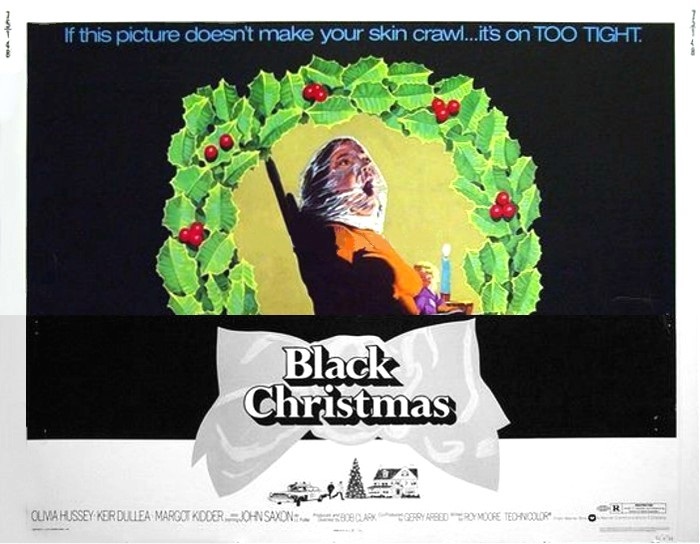
Deck the halls with blood and carnage fa-la-la-la-la-la-la-la-la. Tis the season to be deadly, fa la-la–you get it. When you think of Christmas films you almost certainly think of them as a jolly occasion. These films are usually rife with colorful lights and stories about love and hope. I can almost smell the pine trees and taste the eggnog when visions of A Christmas Story, It’s a Wonderful Life, or Die Hard dances in my head. But, this year has brought on a new chain of thoughts. In 1974 the decision got made to make Black Christmas, a horror film set around Christmas day, and now all the way in 2015 that movie is the only Christmas film I’ve had the desire to watch. The imagery of the holiday isn’t tainted by Black Christmas. In fact, director Bob Clark (who in less than 10 years would go on to direct THE Christmas film, A Christmas Story) shows too much resolve for the holiday to do that. Instead Clark allows the lavishness of Christmas to stand as the backdrop for a host of grisly murders in a quiet college town.
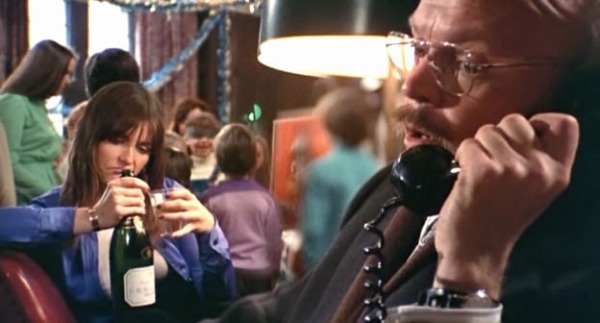
Christmas inadvertently becomes a time where all the right elements fall in place capturing the perfect atmosphere for a bone-chilling horror film. There’s snow trapped households, bitterly cold dark nights, a house of guests looking to get picked off one by one, and the unsuspecting idea of murder as celebration permeates the air. Hollywood producers began to capitalize off this terrifying fact, introducing a slew of horror-filled holiday films shortly after the release of Black Christmas. These days, scary Christmas films are commonplace. Most recently the legend of Krampus made its way to the big screen and only time will tell the likelihood of others, like the myth of Gryla, making their way too. While the formula of mixing terror with beloved holidays is easy and stale from a cinematic viewpoint, it’s much more intriguing when we look more at what was happening around 1974 to spark the idea for a serial murderer lurking in the house of sorority sisters. Better yet, what connection does it have now that even made me want to get in the Christmas spirit with such a grim choice in film?
Black Christmas is considered one of the first slasher films, shortly before The Texas Chainsaw Massacre, long before Friday the 13th, and well before the 1980s made a genre of the lone killer attacking females. Writer Roy Moore supposedly found the chilling inspiration for Black Christmas in real life murders taking place in a Montreal neighborhood some years prior. The grim urban legend of “the killer in the house” also served as prime source material sparked by the real rape and murder of 13-year-old Janett Christman.
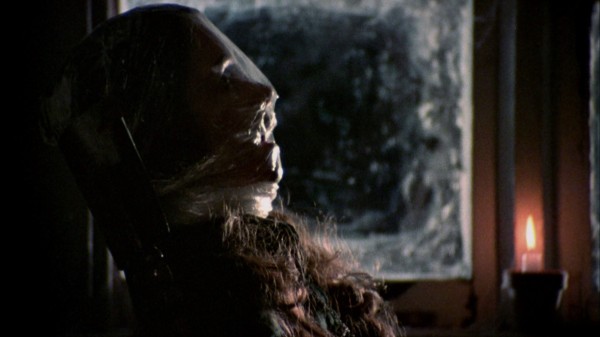
Black Christmas stays ominous throughout the entire film never revealing the killer or their purpose. A truly frightening aspect that often chills me to the bone about real world crimes. Clark chose to heighten the fear by strapping a camera to his back before climbing the façade of the house entering into the attic window. This thrilling point of view captures an immense, ongoing tension placing the audience directly in the sights of the murderer as he is able to go undetected through most of the film. The film’s creepiest scenes and some of the most terrifyingly shot imagery involves the watchful eye of the camera lingering on characters or sounds that we know aren’t from other sources luring each victim to their demise.
The 1970’s marked major changes in society after the 1960’s. With the leaders of movements in the 1960’s all but dead or disillusioned, a large portion of society fell out of favor with social advocacy and unity. Instead, they continued down a road of commercialism and apathy turning away from communal themes that were once promoted in the 1960’s, leading famed author Tom Wolfe to pen the term “The Me Decade” to describe the 1970’s. The parallels between the turbulence of the 1970s to the crisis we are experiencing today are uncanny and frankly shocking. So maybe that’s what led me to watch Black Christmas.
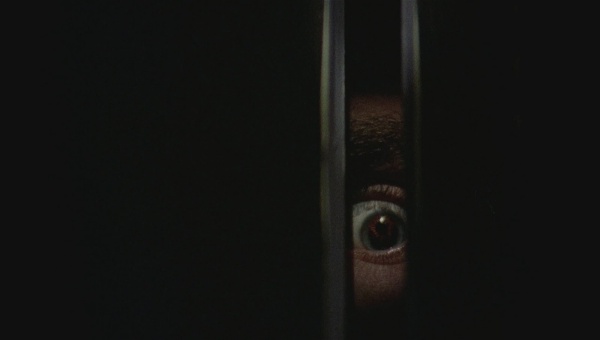
Home for the Holidays, Christmas with the Kranks, Rudolph, Miracle on 34th Sreet, all of these films were at my disposable to watch for me to feel the holiday spirit. Yet, for some reason none of those appealed to me. Even now I have no desire to watch these films. They feel odd and dated when I think of putting them on. Instead films depicting horror and terror appeals to my senses right now. The chaotic times we are living in has surely influenced this decision on a subconscious level. Instead of seeing bright lights and bells and whistles I want to be reminded of horror so that I don’t forget there is something bigger than me to fight for.
Movies are a way for people to escape. For me, they are a learning tool that either allows me to escape into a fantastical world or stay rooted right here in the reality of this brutal planet. There, I can expose myself to horrors experienced by others so that maybe, just maybe, with the right amount of reflection and proactivity I can contemplate ways to end or alleviate it. These feeling have been cemented by the rainy, stormy weather us Georgians are experiencing lately. Something just seems off this year. December has substituted its chilly weather for warm, spring like days nestled between blistering cold ones. Rain has blanketed the city instead of snow. The outside world is running rampant with crime, guns, racial tensions and Donald Trump. It’s an unbalanced year that feels like Christmas then again nothing like it. In these odd times it only feels natural to fill that strange void with films like Black Christmas.
SEE IT. What are some other scary Christmas films that’s worth watching?
Watching A Streetcar Named Desire (1951) in 35mm; And Musings on Celluloid vs. Ditial
When the images of A Streetcar Named Desire began to illuminate the screen in 35mm at Landmark Cinemas, I could hardly contain my excitement. For the past month, I had mentally hyped up how great this film would look plastered on the big screen. I repeatedly told myself, “the lighting will be extraordinary”, “Marlon Brando is going to look beautiful!” I convinced myself that I was about to embark on a remarkable journey that involved seeing this legendary film as it was once intended to be seen by audiences of the past. The open credits began. The names of those involved in the productions jumped around in a barely contained frenzy of unsteady motion. The images on screen moved and crackled distracting me from my fantasy of watching a film in 35mm, instead placing me directly in the reality of doing so. My attention to the movie itself diverted before it had even started. The credits faded to black before opening the film on an establishing shot of a train entering Louisiana. While Blanche DuBois rode that train, I squinted at the screen then thought, “wow the picture sucks.”

The debate over digital and film has prevailed among cinephiles and photographers for decades. There is no right or wrong side. The debate is a matter of preference as to what you enjoy, and for years I had been in the film camp. But, while watching this screening of A Streetcar Named Desire a few nights ago I wondered would this experience convert me to the digital side. Would this make me forgo all of my love for the imperfections of film for the reliability of digital filmmaking? As A Streetcar Named Desire continued I couldn’t help but contemplate my stance.
The mono-tracked sound in my theater was terrible, resulting in sound so low that I had to strain to hear Tennessee Williams’ quick-witted, poetic lines. The focus from the projector was too tight cutting off the tops of character’s heads and making beautiful shots, like when Viviene Leigh’s close-up fills the screen, seem subpar due to disproportionate angling. Moments of intensity was marred by skipping film. Certain shots became characterized by their lint trappings that marked shots with scratches and pieces of black-and-white stripes across the screen. This obviously was not a pristine copy of the film nor was this the way I wanted to introduce my good friend who joined me that night to the art and elegance of celluloid. I worried on and off throughout the first half of the film, paying too close of attention to the technical experience of what was on screen.
Then, immaculate moments would happen. The lighting would wash the face of the actors in a silver glaze inviting shadows to transform moods and ambiance. Depth and a rounding fullness of figures and objects were captured with poignant precision reminding me how these still images were getting ran through a feeder at 24 frames per second. The results of this action procured these faces and settings to this tiny strip of film to forever be refashioned for future audiences. As long as the film itself had light and a projector, it possessed life.
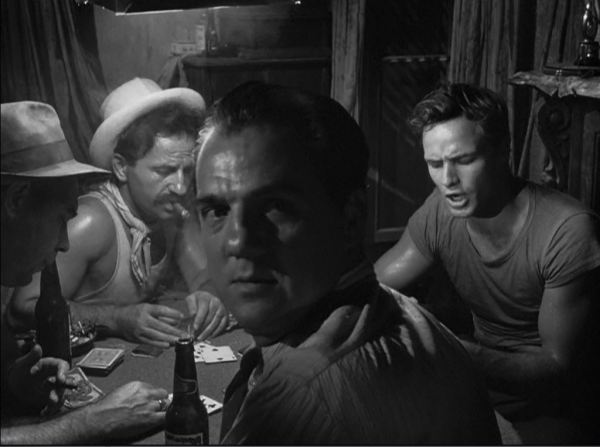
I finally stopped watching with a harsh critical eye and fell once again into the intense story that follows a woman on the verge of mental breakdown. Director Elia Kazan uses his cinematic prowess to unfold the story of Blanche’s reemergence into her baby sister, Stella’s, life and how it shakes up the household inciting a bitter battle between this woman and her brother-in-law, Stanley. The battle between sophistication and commonality, between new age and old times, between high and low-class, between lavishness and modesty. Blanche is a new-age woman with new-age problems; mental health, loose morals, fantastic ideas. On the other hand, Stanley is the physical embodiment of traditional mentality, a working-class man that abides by social norms. The two can’t coexist together. They simply refuse to let the other be just as we tend to do it in our current status with our stark distinctions in political ideology and social definitions.
Then there’s Stella. Sweet little Stella is in the middle. Too comfortable to leave the simplicity of a common life filled with physical pleasures, yet too sensible to return to the social norms of an aristocratic life she once knew. Stella is practical never fully accepting the notions of upper echelon, high classiness of the life her sister wants her to return to, especially when the temptations of fulfilled desires with Stanley stand in the way. This indecision creates a powerful tension among both sides who try to pull Stella in either way. Stella ultimately gets caught between past and present unsure of her future. Kim Hunter’s performance brings life to the tentative Stella through an appropriate balance of reserved laxity and fierce strength sparking a chemistry rooted in sheer naturalism.

Let it be known that no performance in this film can be discussed without mentioning Brando or Viviene Leigh. Brando was simply made to play Stanley Kowalski, even portraying him in the stage version a few years prior to the film adaptation. Brando seeps a smoldering, heart-pounding sex from his aura as Stanley, a man drunk off passion and ego. Leigh is heart-breaking retreating into her own personal demons and delusions to bring them boiling to the surface of Blanche DuBois, a woman too advanced for the society she was born in.
Blanche is promiscuous in a time of staunch conservatism; elite in a place of commonality; and mentally disturbed with post-traumatic stress, anxiety, and possibly bi-polar disorder, but in a world too callous and unprepared to deal with it. Stella rides the middle line aware of these issues and the sides represented in her husband and her sister, but unsure how to take power into her own hands for action until the film’s last iconic scene. All of this powerful material displayed itself bright and silver-tinged on a large screen in front of me while Harry Stradling’s cinematography emanated dancing shadows on the character’s silver faces and soft glows here and there.

The debate over film and digital has always come down to preference. Watching A Streetcar Named Desire in 35mm highlighted something I’ve ignored in admitting to myself for a while; the technical superiority and an appreciation of digital. In the past, I have disregarded Blu-ray copies of movies and completely written off the digital method of filming as if it’s a scourge to the medium. I’m realizing digital is superior in remastering and retouching images. The chance of imperfections are rare and everything is clear and focused. Digital captures images with finesse and refinery adding a clear, shiny coat to them.
But, nothing beats film. Nothing beats that smooth sheen of color that emanates from celluloid film or the dazzling way light reflects through an image on screen. Similarly, the look of lint, dust particles, and scratches when they appear brings character to the images reminding you of the extraordinary technical process that goes into making each frame come to life. Celluloid gives objects a dynamic depth, an effect heightened with the skill and precision of a projectionist aware of how to feed and frame the film. It’s not the “best” method for watching a film if you want a pristine image. Film is instead what you choose when you want warmth and deep tone in your images. It’s like choosing the sun over a UV lamp, or a pine tree over a plastic tree during the holidays. There’s a divine breath that exists within film and for that I will always appreciate and love it. Only next time I run out to see a classic in 35mm, I’ll lower my expectations of the projectionist’s skills and not the medium itself.
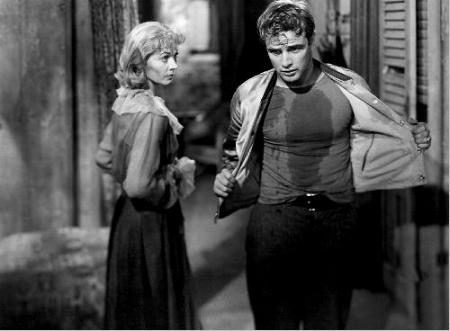
SEE IT. Or any film that you can in 35mm to understand the aesthetic differences. Which do you prefer?






